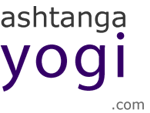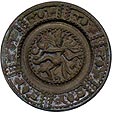
| HOME | MENU | EMAIL |  |
| articles / letters |
“IF IT HURTS YOU’RE DOING IT WRONG!”
by: Janet Meredith
Do yoga daily! Does that sound like it takes a great deal of discipline? David Williams thinks not, as he has been practicing the Ashtanga system of yoga daily, with the exception of moon days and Saturdays, since 1973. David is a dedicated practitioner, because he is fascinated by yoga and its many benefits . To him, discipline implies punishment. Upon meeting the very fit and energetic fifty five year old David, the benefits of yoga become readily apparent.
- "If it hurts, you're doing it wrong."
- "One millimeter past a stretch is tearing."
- "You cannot heal pain by adding more pain."
- "Yoga will cure everything except injuries caused by improper yoga practice!"
- "Do not tug."
- "In India, the words yoga and meditation are synonyms."
- "What is most important is what is invisible [moola bandha, deep breathing, and mental focus]."
- "Yoga is a path to self realization and liberation ... it is meditation in motion."
"Pay attention, be aware, be present in life."
These are just some of the astute observations of David Williams during a four day workshop I attended. Beginning September 30, 2004, my view of
yoga was changed forever. The workshop was an almost 180 degree turnaround from my strict alignment based training of the
past eleven years. If it hurts, you are doing it wrong, was a principle theme of David's workshop. Based on the number of injured Ashtanga
yogis I have met, perhaps this is a very good rule to follow. He shared with us the Ashtanga system of yoga as it was taught to him by Pattabhi
Jois in Mysore, India. It is a bit different than one might experience at a led Ashtanga yoga class in the west where competition plays a
large cultural role. When David first ventured to Mysore there were not any led group classes and yoga was only taught individually and passed
along to others in the same manner.
David's fascination with yogis was what led him to India in 1971, for he desperately wanted to learn “the yoga”. Through serendipitous events
and some hardship, he eventually met his teacher, Pattabhi Jois. One evening, Manju Jois (Pattabhi's son) was performing a yoga demonstration
where David expressed his sincere desire to learn. However, Manju said he was traveling and had no organized classes. He had learned from his
father. Manju also told David that his father only taught Brahman men. Upon meeting Pattabhi in the flesh, David's enthusiasm and sincerity
were so apparent that he agreed to teach him. David was instructed for four months, learning the first, second, and half of the third series
of Ashtanga yoga. When David's visa expired he returned to America and began teaching classes at a yoga and kung fu studio.
Soon thereafter, Pattabhi Jois contacted David wanting to come to America. David arranged what would be considered in today's
terminology a "workshop". Each student contributed enough to pay for Jois and his son, Manju, to come to America. Jois and Manju stayed
for four months. During the workshop, David told us the story of Ashtanga yoga and how it came to be taught by Pattabhi Jois in India. It is as follows:
Krishnamacharya was the head professor at Maharaja's Sanskrit College in Mysore. He decided he wanted to learn yoga and ventured to Mt. Kailash in Tibet and then Varanasi in search of a yoga master. Daily for eight months, Krishnamacharya would request to meet with the master
and daily for eight months, he was refused. One day, his request was honored and after passing a rigorous Sanskrit test, Krishnamacharya was invited to learn yoga. Upon completing his eight years of training,
he returned to the Maharaja's Sanskrit College in Mysore.
It was only a short time before fourteen year old Pattahbi Jois became one of Krishnamacharya's students and began to learn the Ashtanga
system of yoga. Jois tells that he was basically an apprentice to Krishnamacharya and had to beg to be taught yoga. A few years later,
the asthmatic sixteen year old nephew of Krishnamacharya, BKS Iyengar, came to Mysore. Iyengar's family sent him to his uncle to learn yoga
only after exhausting all other possibilities of treatment for his lung/breathing disorders. Jois taught the sickly teenager. Later
Krishnamacharya decided to retire and move to the coast, leaving Jois in charge of the yoga program. Jois was twenty-three at the time. Jois
became a Sanskrit Vidwan (master) as well as the yogasana teacher at Maharaja's Sanskrit College.
David’ s first focus is on the moolabandha, deep breathing, and continuous one pointed concentration. “If it hurts, back off. If it is one millimeter past a stretch, back off. That way no one gets hurt”, mused David. He suggested we use our breath to move ourselves into a posture, rather then pulling or tugging on toes, legs or arms. He also stressed the importance of symmetry. Everyone is stronger, tighter, weaker, etc. on one side. Try brushing your teeth with the opposite hand! “Openings" as so beamingly referred to by some are actually tears and rips, David asked that no one have an "opening" during his workshop!
Here are some differences between most ashtanga classes I have attended and David’s workshop, they are:
- no vinyasas between sides (this is how it was taught in Mysore)
- cobras rather than up dog (ie knees on floor) ... what a difference that makes when you do bunches of them!
- to prevent injuries: no shoulder stands, headstands or handstands (during first series class)
- to prevent injuries: no backward somersaults
David stayed on his mat during practice and led the class by doing the asanas with us, rather than moving about the class.
David taught us that if moola bandha is being properly done, the uddiyana is automatically engaged. The gazing point in most forward
bending postures is the navel, rather than the toes. This engages the chin lock, as instructed by the Yoga Scriptures. He
said that if someone has their chest completely on their thighs and chin between legs, then they can look up and gaze at toes, however this
is not appropriate for those who cannot get their head to their knees, and does not give the benefits of the chinlock. Keeping the head
down completes the natural curve of the spine and allows for the aid of gravity. David's dialogue does not include many Sanskrit words and he
believes that knowing Sanskrit does not make someone a better yogi. The opening and closing chant are not taught because he has found that some
students have no desire to invoke Hindu Gods. David teaches from his mat and claims that most people learn better by observing as well as
hearing instructions, rather than just listening. He says that savasana is the MOST important part of practice. Sounds easy, doesn't it? Savasana or corpse pose is the time
when our body utilizes the prana created by the breath and moola bandha. Prana is life force; prana heals us. Keep the body and the
mind still; do not think (because mental energy is more taxing than physical). Our genetic code and DNA know exactly where healing is
needed and will automatically send prana to that area. Cover up with lots of blankets to keep the internal heat as long as possible. David
suggested that if one is at home, get in bed under the covers! Depending on one's physical limitations, David may ask someone
to repeat sun salutation A and sun salutation B three, five or even ten times, then return the next day for more of the same or to add new
poses. When instructing privately, David has time to fully assess each individual, their capabilities, goals, and injuries. During a group
class there is not time for that special attention, therefore he does not teach headstand or shoulder stand during first series because he
does not want even one person to injure themselves. He also talked about resting on moon days and Saturdays. Consistency is the key. When
Jois taught David in Mysore, there were no vinyasas between right and left sides. This began in California because classes became so popular
and crowded that Jois added vinyasas to make certain everyone mastered the basics.
After more than twenty years of exclusively teaching private classes, David has recently decided to travel and instruct groups in an effort to introduce the original ashtanga system as it was taught to him by Jois. David does not refer to his workshops as teacher trainings; he wants to appeal to everyone and even though someone may be a student with no intention of ever teaching, no one knows the future. One may end up teaching many people or perhaps just a friend. He considers us all potential teachers.
Most yoga in our lives will be practiced alone so we need to make it fun and make it feel good; that is the key to being able to do yoga at age ninety! A minimum of ten minutes per day. Sun salutations A and B along with the three finishing postures. It sounds easy. The question is ... are you fascinated enough?
Janet Meredith has been practicing yoga since 1993 and teaching since 1999. She hosts trips and workshops nationally and internationally. Please visit www.twistedyoga.com for further information.
HOME | PICS | BIOG | EARLY YEARS | CALENDAR | LETTER | ARTICLES | GUESTS | FORUM
Copyright 2004 David Williams
Site Last Updated: